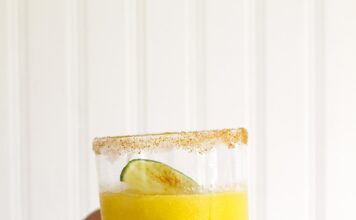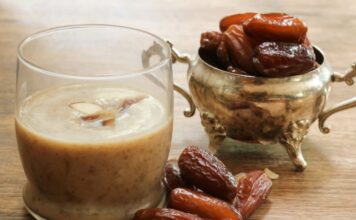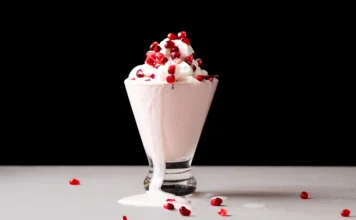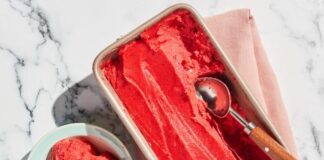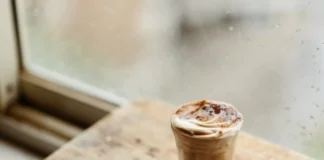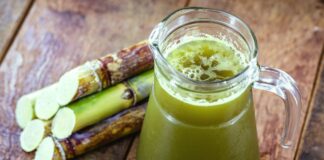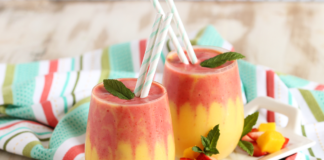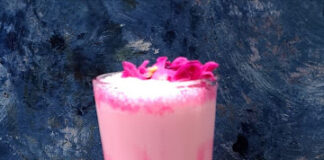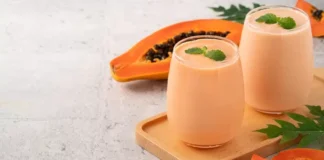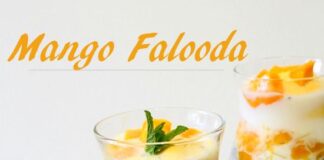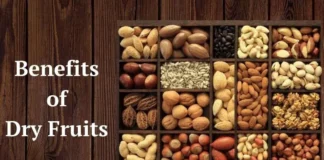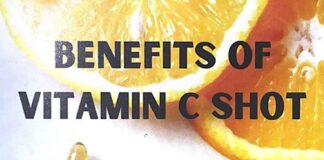Deliciously Refreshing Strawberry Lemon Sorbet: A Summertime Treat Recipe
Indulge in the delightful tangy sweetness of homemade Strawberry Lemon Sorbet! This refreshing treat combines the vibrant flavors of ripe strawberries with zesty lemon for a palate-pleasing sensation. Perfect for hot summer days or as a light dessert any time of the year. Follow this easy recipe for a burst of fruity goodness that will leave you craving more.
Deliciously Cool: Banana Cream Iced Coffee Recipe to Savor
Indulge in a delightful twist on your morning routine with our tantalizing Banana Cream Iced Coffee recipe. Combining the rich flavors of creamy banana with the bold kick of coffee, this refreshing beverage is the perfect pick-me-up for any time of day. Discover how to create this irresistible treat at home with our easy-to-follow recipe. Say goodbye to bland mornings and hello to a burst of flavor with every sip! Let's dive into the delicious world of Banana Cream Iced Coffee together.
Refreshing Kiwi Lemonade Recipe: A Summertime Delight
Quench your thirst with our refreshing Kiwi Lemonade recipe! Bursting with the vibrant flavors of tangy lemons and sweet kiwis, this homemade lemonade is the perfect blend of citrusy goodness. Simple to make and oh-so-delicious, our Kiwi Lemonade will be your go-to drink for any occasion. Whether you're lounging by the pool or hosting a backyard barbecue, this delightful beverage is sure to impress your guests. Get ready to sip on sunshine with our easy-to-follow Kiwi Lemonade recipe
Refreshing Homemade Sugarcane Juice Recipe: Easy & Delicious!
Quench your thirst with this refreshing sugarcane juice recipe! Packed with natural sweetness and vital nutrients, sugarcane juice is a delightful beverage enjoyed worldwide. Our easy-to-follow recipe ensures you can recreate this beloved drink at home effortlessly. Discover the simple steps to extract the goodness of fresh sugarcane, and indulge in a healthy, revitalizing drink perfect for any occasion. Say goodbye to artificial additives and hello to pure, homemade goodness with our sugarcane juice recipe!
Delicious Mango Banana Strawberry Smoothie Recipe: A Refreshing Blend for Health...
Indulge in a refreshing burst of fruity flavors with our tantalizing Mango Banana Strawberry Smoothie recipe! Packed with vitamins and antioxidants, this delightful blend offers a deliciously healthy way to start your day or satisfy your cravings. With its vibrant colors and irresistible taste, our smoothie is sure to become your new favorite go-to treat. Try it now and elevate your smoothie game to a whole new level of yum!
Delightfully Refreshing Rose Milk Recipe: A Floral Twist to Your Beverage...
Indulge in the creamy delight of homemade rose milk with this easy-to-follow recipe. Discover the perfect blend of fragrant rose essence and rich, velvety milk, creating a refreshing beverage that tantalizes the taste buds. Whether served chilled on a hot summer day or as a soothing treat year-round, this rose milk recipe promises to elevate your beverage game. Explore the step-by-step instructions and ingredients below, and treat yourself to a glass of floral-infused goodness today!
Delicious Papaya Smoothie Recipe: Refreshing & Nutritious Blend
Indulge in tropical bliss with our refreshing Papaya Smoothie recipe! Bursting with vitamins and antioxidants, this creamy concoction is the perfect balance of sweet and tangy flavors. Whip up this healthy delight in minutes for a delicious boost of energy and immunity. Discover the taste of paradise with every sip! Try our Papaya Smoothie recipe today and treat your taste buds to a tropical escape.
Mouthwatering Mango Falooda Recipe: A Refreshing Twist on a Classic Dessert
Indulge in the delightful fusion of flavors with our Mango Falooda recipe! This exotic Indian dessert combines creamy mango puree, chilled milk, vermicelli noodles, and a scoop of ice cream, topped with nuts and basil seeds. Perfect for satisfying your sweet cravings on hot summer days. Try our easy-to-follow recipe now!
Unlocking the Health Benefits of Dry Fruits: A Comprehensive Guide
Dry fruits offer a plethora of health benefits, making them an ideal snack choice for those aiming for a nutritious diet. Packed with essential nutrients like vitamins, minerals, and antioxidants, dry fruits promote overall well-being. From improving heart health to boosting immunity, incorporating dry fruits into your daily routine can enhance your vitality. Explore the myriad benefits of these nutrient-rich snacks and elevate your health effortlessly.
Unlocking the Power of Vitamin C Shots: Benefits and Advantages
Vitamin C shots offer a convenient and efficient way to boost your immune system and overall health. These shots provide a concentrated dose of vitamin C directly into the bloodstream, allowing for quick absorption and utilization by the body. Some potential benefits of vitamin C shots include.

